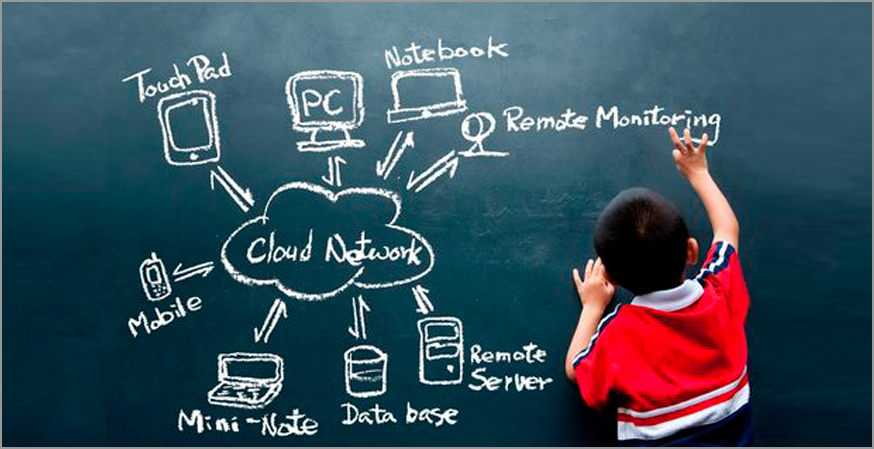Introduction
We are well aware that the world is advancing day-by-day (rather should I say moment-by-moment) thanks to advancements of the technology. Almost everything is changing with astonishing effects associated with it. Why should learning be barred from its touch.?
Here comes into play – Bring Your Own Device (BYOD) in the field of education and learning. Implemented correctly BYOD can bring in sweeping changes in the way education is delivered and consumed globally.
Let us demystify that!
What is Bring Your Own Device (BYOD)?
BYOD stands for Bring Your Own Device,the practice of allowing the employees or students of an organization to use their own computers, smartphones, or other devices for work purposes or to study.
The Bring Your Own Device trend makes sense and can be proved as remarkable step in the field of learning. It’s cost-effective and lets students use and feel the device they already know and love. It’s a great start to bringing in web 2.0 tools and programs to the classroom.
Recently there was a news update that, the Pew Research Center’s Internet & American Life Project recently asked over 1,600 experts what they have views about the future of the Internet. Respondents replied that the Internet would essentially become the equivalent of electricity—something so important to our daily lives that it is in real, invisible.

Compelled by a similar vision of the future and the increasingly technology- driven nature of our society, more and more schools are adopting BYOD policies throughout the world, encouraging students to bring tablets, mobile phones and other Internet-compatible devices to class to serve as learning aids. According to the 2014 Digital School Districts Survey, the percentage of schools using BYOD has jumped from 34 to 56 in just the last year. And we are soon expecting such trend in our country too, as it can lead to drastic change in the field of learning.
Does BYOD Makes Sense for Educators? – It Has To!
Cost Effective:
Computer labs are costly to replace. For example, many libraries are moving away from computer labs and leasing laptops for uses. BYOD eases the demand imposed on schools. It allows the most effective use of most recent technologies in the classroom, since students replace the technology themselves in a better way than others.
Interactive Learning:
Technology can make learning fun and interesting. The interactive nature of BYOD hones in on student learning. Digital books often include free supplemental resources, such as study guides, chapter outlines, and tests that monitor progress and provide feedback.
Easier Instructions:
Teachers can use media to meet different learning needs. BYOD allows students to be in control of learning. Many technological tools can help students with disabilities or even translate words for ELL students. Gifted students can research more advanced applications and students who need practice can do so individually.
Its Manageable:
For those who fear devices for the potential of rule bending, BYOD provides new learning opportunities. Educators can teach technology etiquette and ethics, which is becoming increasingly necessary. BYOD can be managed like any other resource in the classroom.
Saves Time:
BYOD makes collaboration easy. Research can also be done faster. More different sources can be used to support learning. Educators, might even educate students about, how to evaluate and find the best resources in a particular field? Virtual walk-through are easy with technology at their fingertips.
I must say,it is not just applying concept of BYOD to the system of learning, but it should be applied precisely and effectively so it has got more advantages then its countless drawbacks, in short , in a right way.
Doing BYOD – The Right Way!

Capacity, to implement BYOD, is something each school’s staff must evaluate. Educators, who follow best practices, for using BYOD effectively in their classrooms offer the following suggestions:
It should be assured that is there good infrastructure. School need to upgrade its Wi-Fi system and make available an IT specialist, BYOD implementation might be headed for trouble. Superiors should provide bandwidth BYOD will likely demand.
Backups should be provided. Even students who have devices may lose or break them or become targets of theft. Teachers should have enough devices for their lessons. This requires creative budgeting and fundraising outside the school.
This could have teachers, students, parents and community members. It should be identified whether students are being left behind by BYOD and find adequate ways to include them. The biggest challenges the task force can expect to face are fundraising for backup devices and finding out-of-school Internet connections for low-income students.
Making teacher trained is another critical element. Teachers who get no or poor training often seen to just stop using the technology completely. Schools that have already implemented BYOD are potential professional development resources.
Students are understandably enthusiastic about using personal devices in school. They are also resourceful, creative and tuned in to, both the technology and social aspects, underlying BYOD implementation challenges.
Bottom Line – Emertxe’s View
The field of education should adapt technology to make it more effective. BYOD is one such phenomenon which is changing the way education is delivered and consumed. By taking proper care during implementation it can yield wonderful results.
From Emertxe’s point of view we strongly encourage BYOD among out students by allowing them to connect with classroom network and ability to access contents via mobile phones. We have also seen some pitfalls (ex: examination malpractice) which requires proper supervision and careful tuning of BYOD implementation. However we are pretty sure in future everybody will bring their own devices for delivery and consumption of education.
Which BYOD you are planning to bring next time to the classroom?